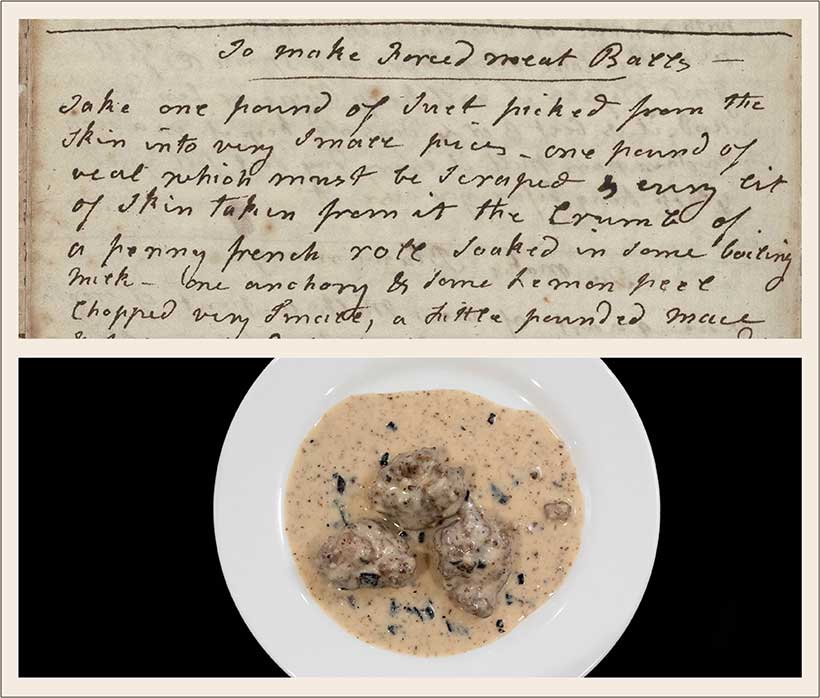For the Meatballs:
One jar of tallow (~ 1lb)
One lb of veal
1 small baguette, slightly stale and soaked in boiling milk
Four pieces of anchovy
Grated lemon zest from one lemon
Mace
Salt & Pepper to taste
2 Egg Yolks
Panko Bread crumbs
For the Gravy:
One large onion
One bunch of Rosemary, Sage and Thyme
Lemon zest
¼ cup Flour
¼ cup butter
4 cups of beef broth
Salt & Pepper to taste
Preparation
Take one small stale baguette and dunk it into a bowl full of boiled milk. Let sit.
For the Gravy
Sauté one diced onion in ¼ cup of butter, until golden brown. Add the same amount of flour to it. Bring to a boil and let cook until thick. Add a bunch of rosemary, sage and thyme wrapped in twine, along with lemon zest. You can also add lemon juice from the lemon if you wish. Add four cups of beef broth and let simmer for a while. Stir regularly to eliminate clumps. Season to taste and let sit on low heat until meatballs are ready.
For the Meatballs
Then, mix together the tallow, veal, four pieces of anchovy (canned is fine), lemon zest, some mace, the soaked loaf and two egg yolks- To separate an egg yolk from the egg, crack the egg and open it, attempting to create two halves of the eggshell. While doing this, make sure that the egg yolk does not fall. Pass the egg yolk from one half of the eggshell to the other, so that the egg whites fall out until you are left with an egg yolk.
Once mixed, add some of the gravy that you made, about ½ a cup. If you feel this is too wet you can add panko bread crumbs. Then roll the meat into small balls, about 1 tbsp of meat in each one. Bake in a greased pan in an oven at 400 degrees for twenty minutes. Serve in a bed of gravy.
Notes by Sarah Montoya ’21:
I made several adjustments to this recipe for both practical and aesthetic reasons. Firstly, the original recipe calls for suet while I ended up using tallow which is a more usable version of suet. Tallow is readily available at many grocery stores. Another contemporary adjustment is using canned anchovies instead of a whole anchovy fish.
After making Forced Meat Balls, I also made a decision to use lemon zest as the recipe originally calls for lemon peel. Large chunks of lemon peel were very unappetizing in the meatballs, so it made sense to use lemon zest instead.
The meatballs I made fell apart slightly, so I increased the amount of eggs.




